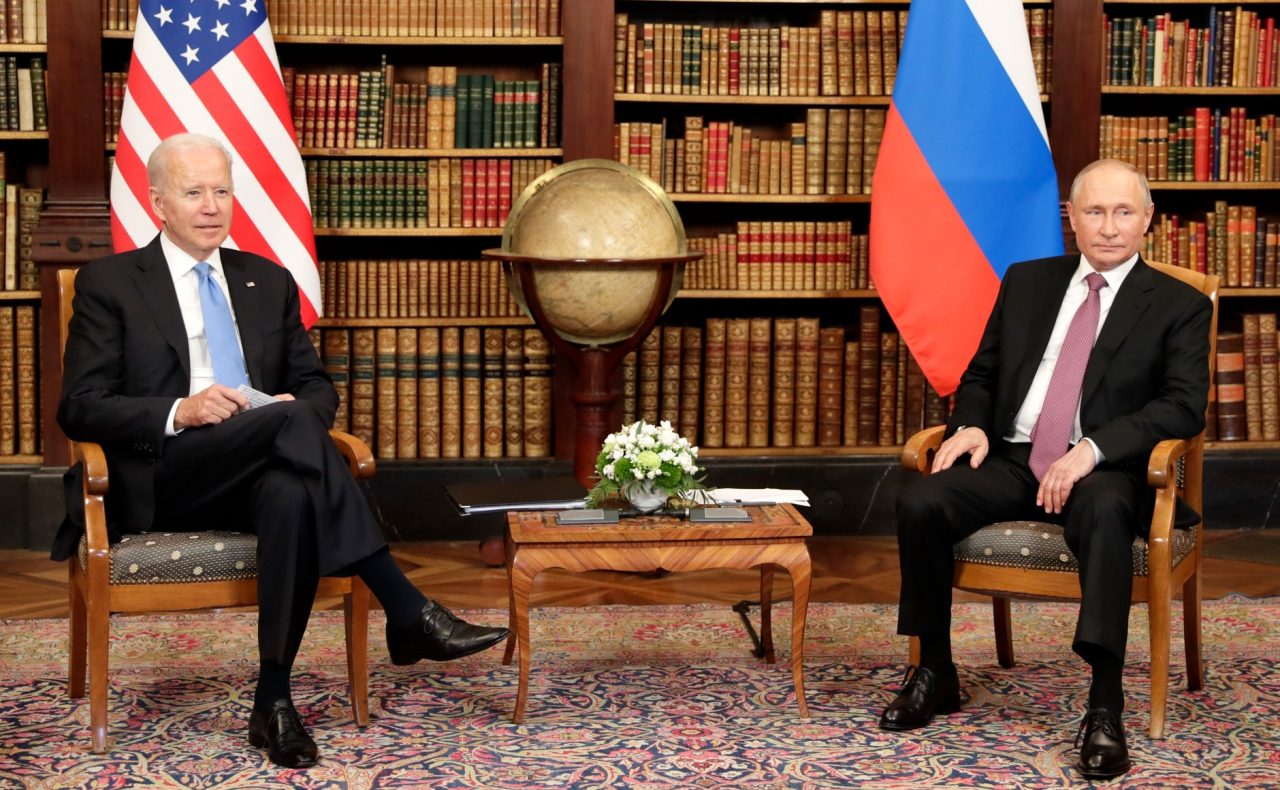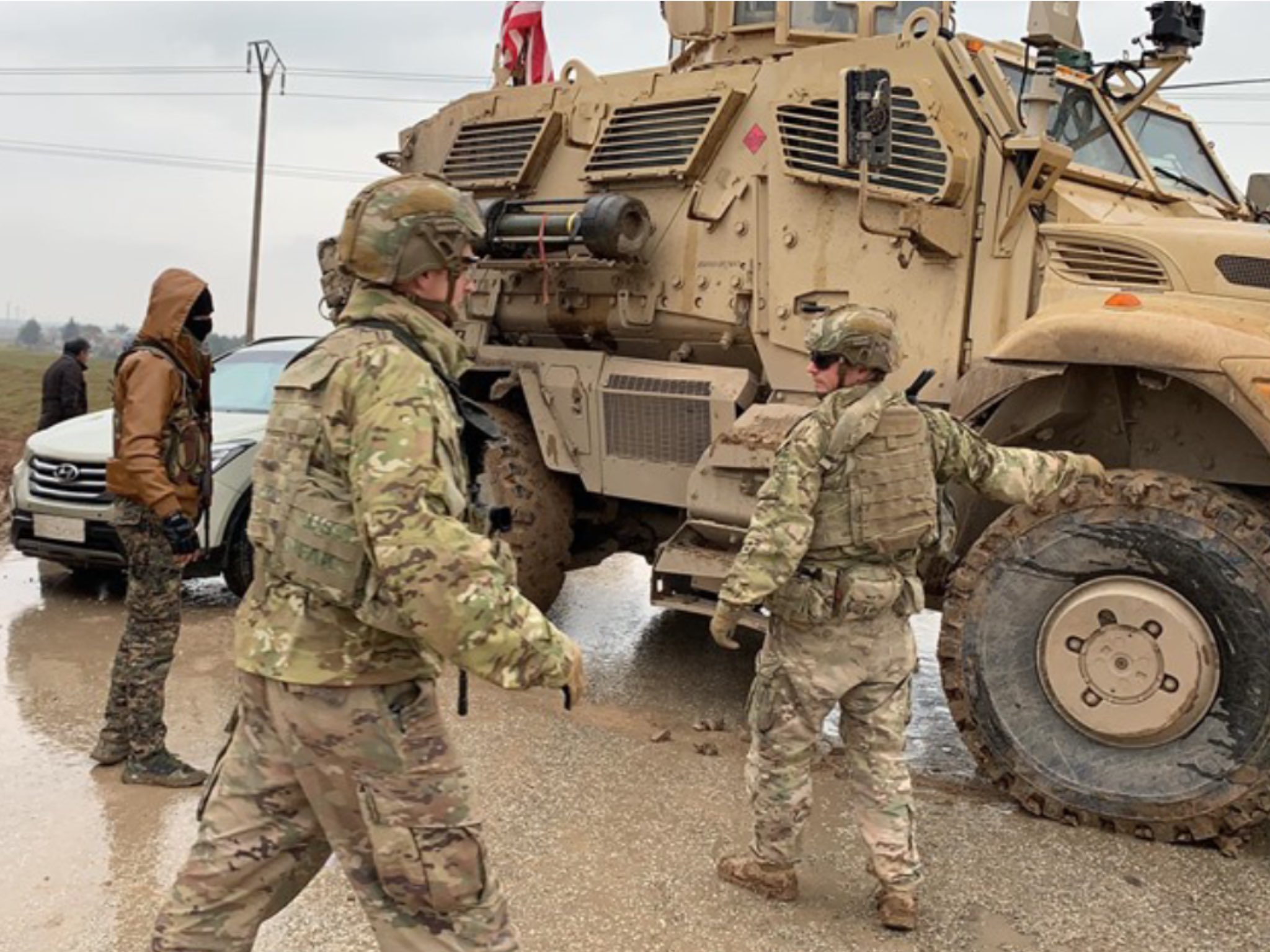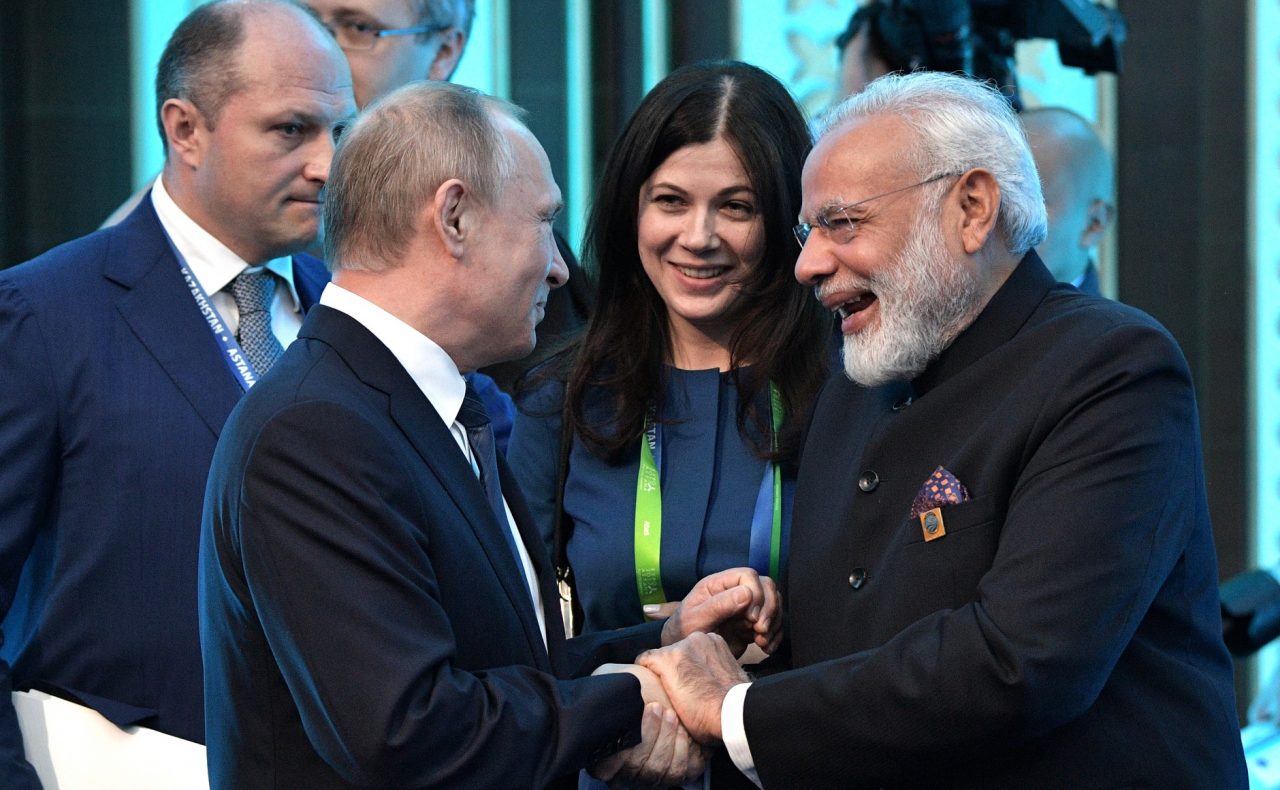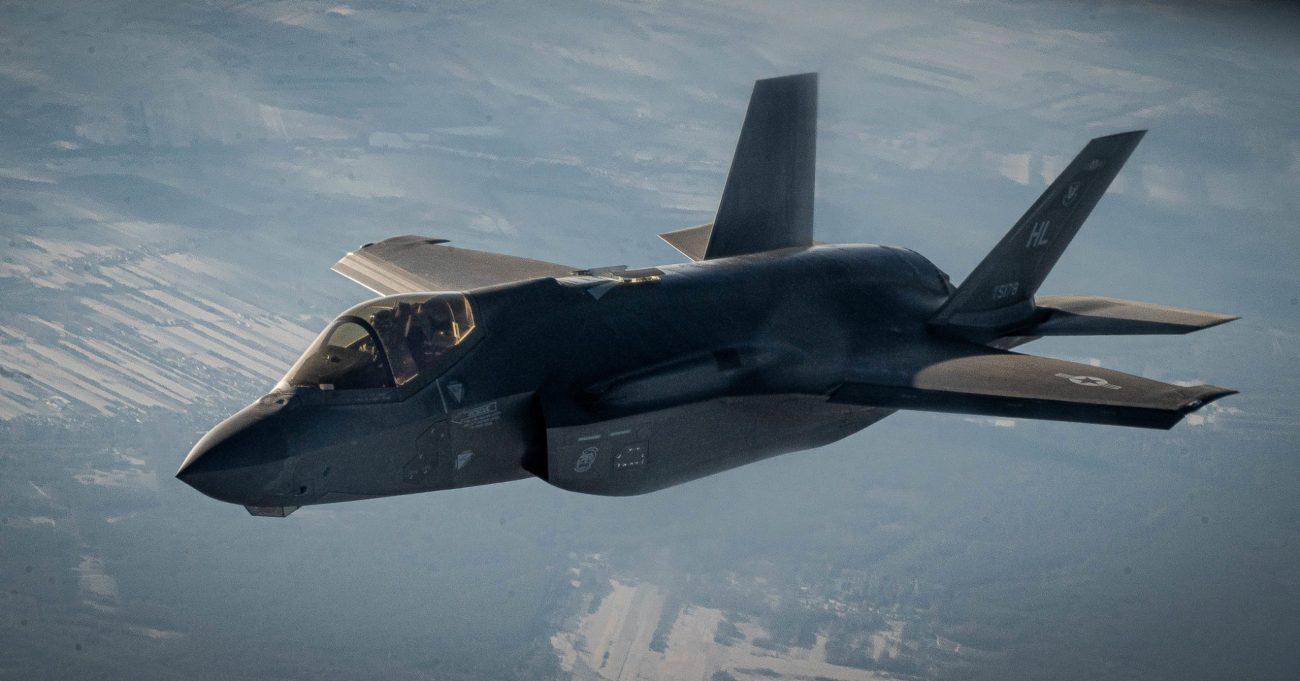US President Joe Biden may be the harshest critic of his Russian counterpart Vladimir Putin. Biden may be the first US President who has gone to the extreme extent of imposing harshest possible sanctions on Russia.
Successor To Dassault Rafale & Eurofighter Typhoon – Why The Next-Gen FCAS Fighter Jet Program Is Hitting Turbulence
But given the three major indications over the week, it is clear that Biden, despite all his bravado, is unwilling to do anything that results in a direct military confrontation with Russians.
US, Russia Are Still In Talking Terms
One, the 30-member NATO led by the US made it categorically clear on March 4 that it would not impose a ‘No Fly Zone’ over Ukraine that its President Volodymyr Zelenskyy is asking for and many influential American Senators, Congressmen and decision-makers are demanding.
“We’ve agreed that we should not have NATO planes operating over Ukrainian airspace or NATO troops on Ukrainian territory”, NATO Secretary-General Jens Stoltenberg said.
Imposing a ‘No Fly Zone’ means disallowing Russian planes into the Ukrainian sky and preventing them from carrying out airstrikes. And that, in turn, means enforcement by NATO’s military power, an action that will be seen by Russia as an act of war.

In fact, the NATO decision was preceded on March 3 by the remark of White House Press Secretary Jen Psaki that the decision not to establish a no-fly zone over Ukraine is yet another way the US is attempting to avoid escalating the conflict. “It would require, essentially, the US military shooting down Russian planes and causing or prompting a potential direct war with Russia — the exact step that we want to avoid,” Psaki told reporters.
Two, on March 4, US Secretary of State Antony Blinken told BBC that the US was not looking for a regime change in Moscow. “It is absolutely not up to us”, he said, while “calling on the Russian people to hold their own leadership accountable for the war.” This clarification is significant, given the growing chorus in the United States to facilitate the ouster of Putin. In fact, on March 3, US Senator Lindsey Graham had sparked outrage by calling for “the assassination of President Vladimir Putin”.
Three, and this is most important (though most underplayed in the global media), on March 3, the Pentagon revealed that it has established a communication line to the Russian Defense Ministry “in attempts to reduce the risk of dangerous misunderstandings as Russia wages war on Ukraine”.
Military-To-Military Channel
Apparently, two days before, on March 1, the US Defense Department set up “the deconfliction line for the purposes of preventing miscalculation, military incidents, and escalation.” A senior Pentagon official said on the condition of anonymity that “the United States retains a number of channels to discuss critical security issues with the Russians during a contingency or emergency.”
Reportedly, this military-to-military channel is running out of the US European Command headquartered in Stuttgart, Germany. The Russians have responded to it positively. Of course, it is not the first time the US and Russia have created such a mechanism.
They had established a similar back-channel after Russia entered Syria’s multi-sided civil war in 2015 to side with President Assad. That time the US was flying sorties to bomb ISIS strongholds in Syria and had deployed special forces for targeted missions on the ground.

In fact, there was a second attempt by the US over the week to avoid miscommunication and misunderstandings with Russia. Chief Pentagon spokesman John Kirby announced on March 2 that Defense Secretary Lloyd Austin has postponed a planned nuclear missile test scheduled for this weekend “in an effort to demonstrate that we have no intention in engaging in any actions that can be misunderstood or misconstrued.”
Kirby further emphasized, “We recognize at this moment of tension how critical it is that both the United States and Russia bear in mind the risk of miscalculation and take steps to reduce those risks,” adding “We did not make this decision lightly, but instead to demonstrate that we are a responsible nuclear power.”
Nuclear Deterrence
Here, what is to be noted is that when Americans call them “responsible nuclear power”, they also imply that despite their other “crimes”, Putin and Russians are equally responsible on nuclear issues. Not only the Biden Administration, nuclear experts in the US and elsewhere are also not buying the theory that Putin has threatened to launch a nuclear war, a theory that has been over-exaggerated on social media.
Prof. Gary Samore, who served in the US government for more than 20 years focusing on nuclear arms control, including the days under President Clinton and President Obama as a senior official in the National Security Council, says that Putin’s recent comment on keeping his nuclear forces on alert should not be seen beyond “as a warning to the US and NATO not to intervene in the Ukraine conflict.”
According to Pavel Podvig, a senior researcher at the United Nations Institute for Disarmament Research in Geneva, “Putin basically said, ‘Because of all these hostile or aggressive statements and aggressive policies, we should start this special mode of combat duty of our deterrent forces.'” It is unclear what a “special mode of combat duty” actually is, but Podvig thinks that it is the order that activates Russia’s nuclear command and control system.

“Normally, in peacetime, the command and control system is configured in a way that makes the transmission of an actual command very much impossible,” he says. “It’s like you could press the button, but then nothing happens, because the button is not connected to anything.”
Putin’s order may have meant he wanted the button activated, but Podvig, based on the subsequent clarification given by the Russian Ministry of Defense, says that it could be “they just added a few more people to the crews.”
Alexander Lanoszka, Assistant Professor at the Department of Political Science at the University of Waterloo, seems to agree with Podvig. “Keep in mind that Putin’s recent announcement mostly relates to staffing at various nuclear command and control centers.
It does not yet appear that strategic and nonstrategic forces have changed their posture. The risk of nuclear weapons use is obviously elevated relative to normal circumstances, but the threat remains low for now”, Lanoszka points out.
However, there are the likes of policy analyst Patty Jane Geller, who say that while any Russian attack on the US or any other NATO country is improbable, there could be a situation in which Russia could apply its tactical nuclear weapons to compel Ukraine to back down. “But Putin should know that using nuclear weapons would break the 75-year taboo the world has established against using such weapons”, Gellar, who worked on the staff of the Senate Armed Services Committee, argues.
As it is, Russia officially says that it would use nuclear weapons only if the nation’s very survival was at risk.
Russia — A Nuclear Superpower
It may be noted here that Russia has more nuclear weapons than any other nation in the world. Reportedly, it has 14,000 nuclear warheads in storage, out of which 4,500 or so are in their military stockpile that can be delivered by submarines, bombers, and intercontinental ballistic missiles, according to Hans Kristensen, Director of the nuclear information project at the Federation of American Scientists.
This number includes nearly 2,000 so-called tactical nuclear weapons, which are kept in storage facilities throughout Russia for the purpose of fighting a limited regional battle, sort of a nuclear war in a very small area, says Kristensen.
On the contrary, the US possesses 3,750 active and inactive nuclear warheads with an estimated tactical 150 at various sites in Europe. The UK has a sea-based deterrent that has expanded to about 225 nuclear warheads, about half of which are operationally available on four submarines. And France has a nuclear stockpile of about 300 nuclear weapons.
The point thus is that if the number of tactical nuclear weapons in Europe is taken into account, then Russia is way ahead of NATO-led by the US.
Of course, with regard to strategic nuclear weapons, the difference of numbers between the US and Russia does not matter much as both have enough capacities to hit every part of one another through their respective triads.
The only difference, as Geller points out, lies in the fact that whereas Russia is developing brand new “novel” capabilities that can strike the US, like hypersonic missiles and a nuclear-powered cruise missile and torpedo, the US “still relies on platforms built during the Cold War. For instance, the US is still squeezing the life out of the Minuteman III intercontinental ballistic missile that was designed in 1960. Programs to replace these outdated capabilities with modern systems are just getting underway”.
Giller also adds that the US missile defense system, which is designed to defend against limited nuclear attacks from rogue states such as North Korea, is not good enough to cover the country from Russian missiles. “We have 44 homeland interceptors that could not defend against Russia’s hundreds of nuclear missiles”, she adds. It has been the US policy all these years that its nuclear deterrence theory (its capacity to strike every part of Russia) will dissuade Russians from threatening America with nuclear weapons.
Similarly, it is said that in Europe, “the US deploys an Aegis Ashore missile defense system in Romania and is building one in Poland, but those are directed at the Iranian missile threat. Russia’s missile arsenal can overwhelm those systems,” though Moscow alleges that the US can launch offensive missiles from those defense systems at Russia.
In short, in any hypothetical tactical nuclear war in Europe, Russia seems to have an upper hand compared to that of NATO. Even in terms of troops, Russia seems formidable. As Mark Cancian, a senior adviser at the Center for Strategic and International Studies, a major think tank in Washington DC argues, in the NATO region near Ukraine, the US has a light infantry from the 82nd Airborne Division, but the paratroopers here are lightly armed and not very mobile.

“They lack the transportation, logistics, and heavy firepower that would be needed for a fight against Russia with all its armor and artillery. Further, U.S. forces lack the immense logistics train required to sustain a conflict in eastern Ukraine. Although Poland, where most of the troops will be located, is next to Ukraine, US troops will be about 800 miles from the likely confrontation areas in the Donbas region of eastern Ukraine.
Finally, US forces in Eastern Europe are few — 6,000 when they finally arrive plus about another 5,000 from a US brigade already in Poland. That is far too small a force to face the 100,000 or so Russian ground troops”, Cancian argues.
If all the above points are viewed in totality, it becomes clear why a war between the United States and Russia is highly unlikely. In fact, the chances are zero.
- Author and veteran journalist Prakash Nanda is Chairman of Editorial Board – EurAsian Times and has been commenting on politics, foreign policy on strategic affairs for nearly three decades. A former National Fellow of the Indian Council for Historical Research and recipient of the Seoul Peace Prize Scholarship, he is also a Distinguished Fellow at the Institute of Peace and Conflict Studies. CONTACT: prakash.nanda@hotmail.com
- Follow EurAsian Times on Google News





